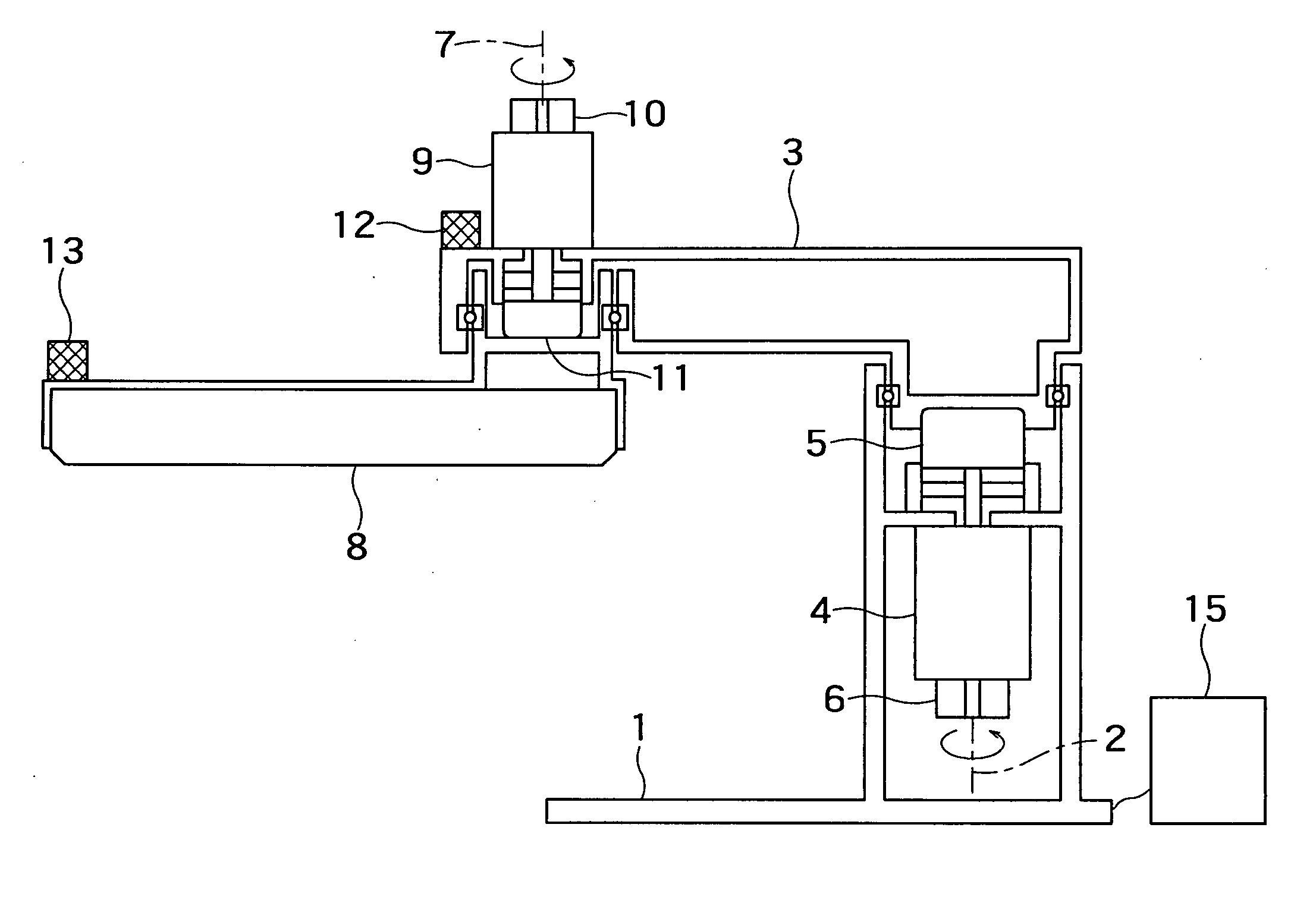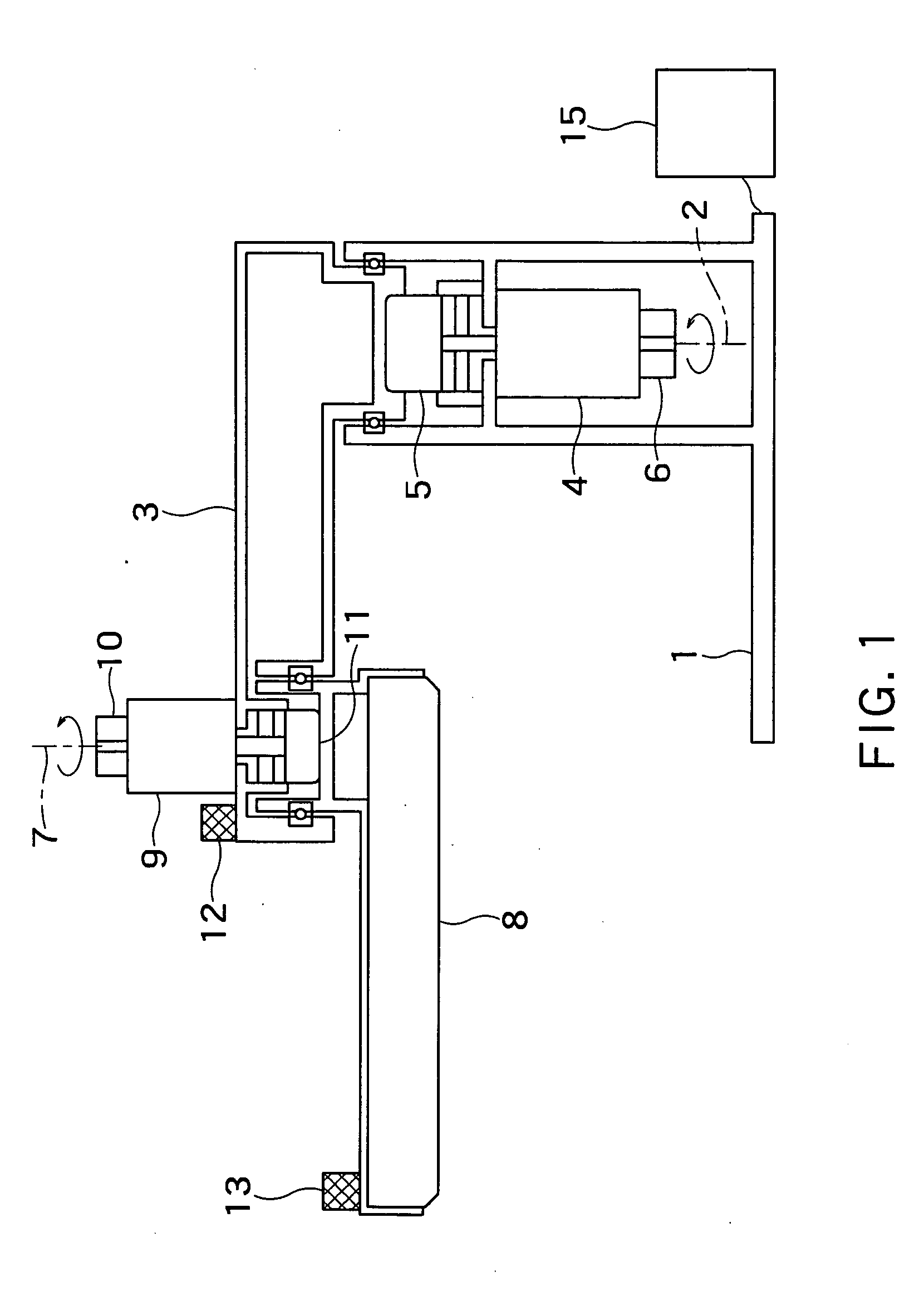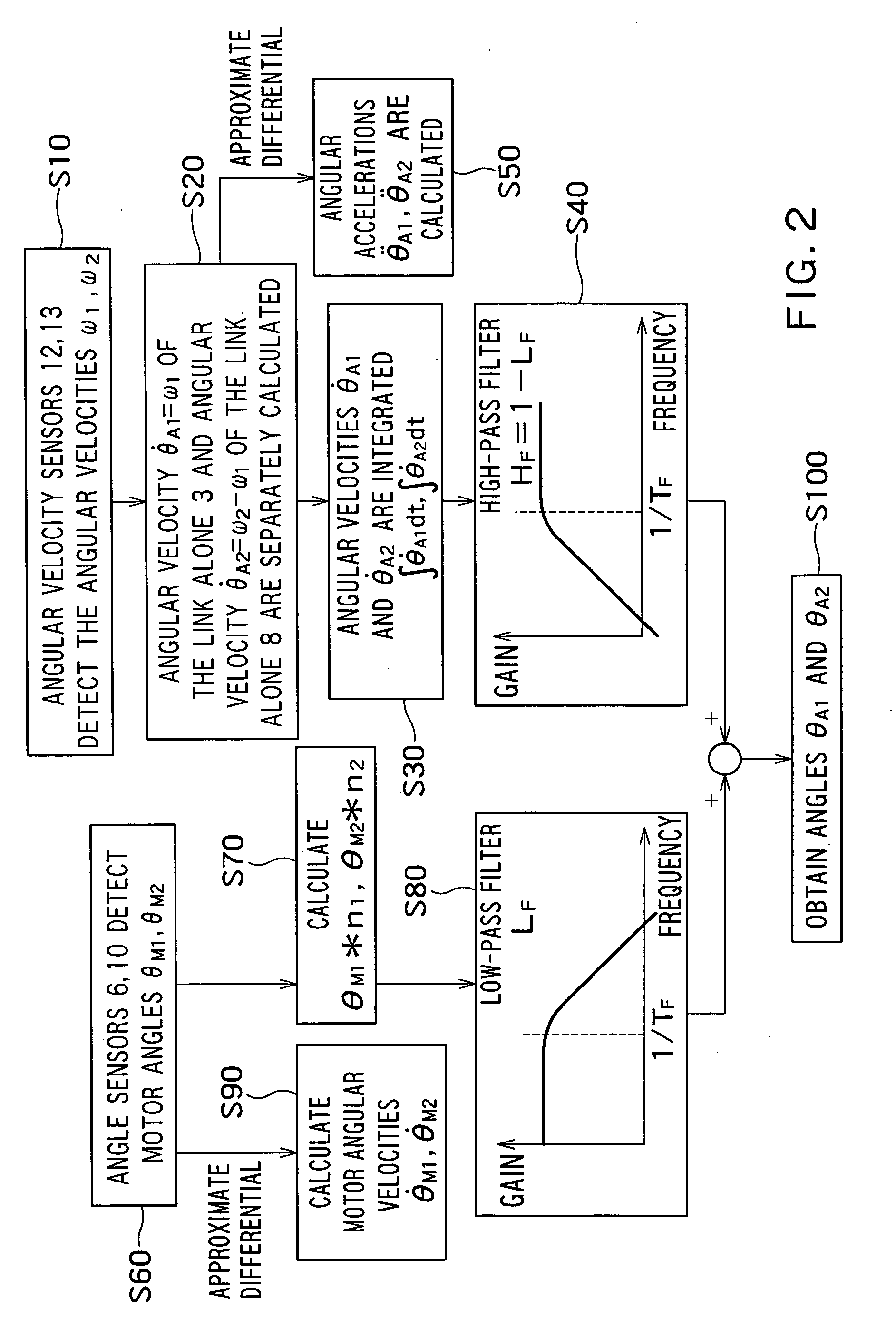Robot controller and robot controlling method
a robot controller and robot technology, applied in the direction of program control, electric programme control, instruments, etc., can solve the problems of complex structure, vibrating of the actuator and the link, and the inability to add the angular sensor to an existing multi-axis robo
- Summary
- Abstract
- Description
- Claims
- Application Information
AI Technical Summary
Benefits of technology
Problems solved by technology
Method used
Image
Examples
second embodiment
(Second Embodiment)
[0040] In a second embodiment, a state feedback control is performed, further considering compensation for interference force between links 3 and 8 in the first embodiment. The present embodiment has a similar configuration to that of the first embodiment, and the difference is that a CPU in the second embodiment performs operations, by which the interference force is compensated. A robot 100 can be represented by the following Formula 5, considering the joint elasticity: MMθ¨M+DMθ.M+fM sgn(θ.M)=τ-NH[KH(NHθM-θA)+DH(NHθ.M-θ.A)]MA(θA) θ¨A+cA(θ.A,θA)+DAθ.A=KH(NHθM-θA)+DH(NHθ.M-θ.A)(Formula 5)
[0041] Here, θM=(θM1, θM2)T represents an motor angle; θA=(θA1, θA2)T does a link angle; MA (θA)εR2×2 does a link inertia matrix; CA ({dot over (θ)}A, θA)εR2×1 does a vector of Coriolis centrifugal force; MM=diag (mM1, mM2) does an addition of inertia of a motor rotor and that of the high-speed stage of a reduction gear; mM1 does an addition of inertia of a mo...
third embodiment
(Third Embodiment)
[0058] A third embodiment has a configuration, in which state feedback control is performed, considering a force from the outside (hereafter, called an external force), which is given to a link 3 or 8. The present embodiment has a similar configuration to that of the first embodiment, but the difference between the both embodiments is that feedback control is performed, considering the external force.
[0059] In the present embodiment, the link 8 is provided with an inner force sensor (not shown), by which a force applied on. the tip of the link 8 is measured. The present embodiment can be applied to, for example, a case, in which a predetermined force is applied to a certain object by a robot 100. In this case, a joint is kept in a twisted state even when a link angular velocity {dot over (θ)}A becomes 0, because a stationary force is applied to the tip of the link 8. Accordingly, Formula 2 does not hold true. Then, in the present embodiment, a twisted angle of the...
fourth embodiment
(Fourth Embodiment)
[0066] A fourth embodiment has a configuration, in which the stationary force applied to the link 8 is gravity, wherein the stationary force has been described in the third embodiment. Though the links 3 and 8 of the robot 100 shown in FIG. 1 are rotated in a horizontal plane, the links 3 and 8 are influenced by gravity when the links 3 and 8 are configured to be rotated in a vertical plane. Thereby, the joints of the links 3 and 8 are in a twisted state even under a stationary state.
[0067] In this case, a gravity term gA (θA) represented by the gravitational acceleration g is added to Formula 11. Thereby, torque τ can be represented by the following Formula 26, and the gravity term gA (θA) can be represented by the following Formula 27: τ=MN(θA)θ¨A+ cA(θ.A, θA)+fM sgn(θ.M)+ gA(θA)+u(Formula 26)gA(θA)=[-r1g sin θA1-r2g sin(θA1+θA2)-r2g sin(θA1+θA2)](Formula 27)
[0068] Subsequently, a parameter r1 r2 in gA(θA) is identified. Here, it pre...
PUM
 Login to View More
Login to View More Abstract
Description
Claims
Application Information
 Login to View More
Login to View More - R&D
- Intellectual Property
- Life Sciences
- Materials
- Tech Scout
- Unparalleled Data Quality
- Higher Quality Content
- 60% Fewer Hallucinations
Browse by: Latest US Patents, China's latest patents, Technical Efficacy Thesaurus, Application Domain, Technology Topic, Popular Technical Reports.
© 2025 PatSnap. All rights reserved.Legal|Privacy policy|Modern Slavery Act Transparency Statement|Sitemap|About US| Contact US: help@patsnap.com



